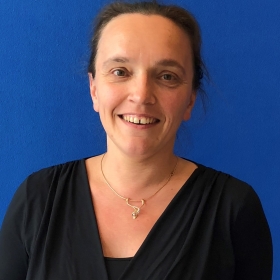Since 2012, Veronique Van Speybroeck is full professor at the Ghent University within the Faculty of Engineering and Architecture. Veronique Van Speybroeck was co-founder of the Center for Molecular Modeling (CMM, http://molmod.ugent.be) around 2000, which has now become a multidisciplinary research grouping about 40 researchers with molecular modelling interests. Since 2012, Van Speybroeck is leading the CMM. The CMM aims to model molecules, materials and processes at the nanoscale by bringing together physicists, chemists, (bio-)engineers and stimulating collaborations across disciplines. This multidisciplinary collaborative mission is the DNA of the CMM and key to achieve scientific excellence in the field of molecular modeling.
Veronique Van Speybroeck has a record of significant contributions in the field of modeling nanoporous materials for catalysis, adsorption, e.g. zeolites, Metal-Organic Frameworks, Covalent Organic Frameworks; all applications are inspired and performed in close synergy with experimental groups. The research is driven by the ambition to model as close as possible realistic materials/processes. To this end, Veronique Van Speybroeck systematically pushed the limits of simulation methods. She is recipient of two ERC grants (ERC StG in 2010 and ERC CoG in 2015), which were strong drivers for new method developments in the field of nanoporous materials. With the ERC StG grant, new methods were developed to calculate accurate chemical kinetics for reactions taking place in nanoporous materials. With the ERC CoG grant, Veronique Van Speybroeck pioneered the simulation of complex catalytic conversions at operating conditions using enhanced molecular dynamics simulations capturing the full complexity of the free energy surface, as she became strongly convinced that simulations had to account for true operating conditions such as realistic temperatures, pressures, feeds. Currently, she is exploring methods to simulate materials with inclusion of spatial heterogeneities, as the behavior of realistic materials may strongly affected by crystal size, morphology, presence of defects.

